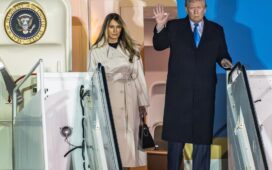The all-new MC30 is here. This is a curated basket of 30 investment-worthy mutual fund schemes. While the list remains largely the same year after year, some schemes go out and get replaced.
A quick recap of why this churn- albeit minimal – happens. Schemes go out due to consistent poor performance (they would have taken a turn for the worse after they entered MC30) or a change in its mandate or fund manager.
This might not warrant an immediate sale but may call for it to be kept under watch for some time. Or quite simply, there could be better, more screaming, alternatives. Whatever the reason, the objective is to keep changes to the minimum.
In the MC30 2024 edition, three new schemes make their debut. Let’s meet them, shall we?
HDFC Flexi-cap Fund
Story continues below Advertisement
With an asset size of Rs 50,840 crore, HDFC Flexi-cap fund (HFF) is the fourth largest actively managed equity scheme among Indian mutual funds. Launched in January 1995, HFF has grown by leaps and bounds and has rewarded unit holders with a compounded annualised growth rate of 19 percent since launch.
HFF’s good performance came under the leadership of Prashant Jain, one of the most celebrated fund managers, who oversaw the fund from 2004 to 2022. Roshi Jain, senior fund manager – equities, took over in July 2022 after Jain left. She had spent close to 17 years with Franklin Templeton Asset Management (India).
Story continues below Advertisement
Despite the scheme’s impressive long-term returns, it went through a rough patch from 2015 to 2019. Some of Prashant Jain’s concentrated and contrarian calls did not yield the desired results. Post-2020, his value style approach of picking stocks, namely in public sector companies from the power and finance spaces, came back in favour and his schemes were rewarded.
Roshi Jain has made subtle, yet crucial, changes to the scheme.
“The underlying philosophy of the fund house remains ‘growth at reasonable price,’” she said.
One key change she made was to reduce the number of scrips in the portfolio. From 56 stocks that HFF held in July 2022, she bought it down to 41 by the end of February 2024. She cut exposure to energy, industrials and consumer staples and increased exposure to healthcare and real estate.
Also read: Best mutual funds: 86% of actively-managed schemes outperformed benchmarks in MC30’s 2023 run
HDFC Top 100 Fund
Another HDFC MF scheme enters the MC30: HDFC Top 100 fund (HT100), a large-cap fund.
Launched in September 1996, HT100 is one of the oldest funds. Earlier known as HDFC Top 200, it has maintained its dominance in both asset size and returns. Now it is the fifth-largest fund within the large-cap category.
It has consistently demonstrated great resilience in its comeback stories. Sticking to its value-conscious investment approach made it go through many ups and downs over the past 15 years. For instance, the fund’s performance was below average during 2015-2019, when the value style was out of favour. However, it surged after 2020 when the value strategy made a strong comeback.
Also see: The methodology behind the curated basket of mutual fund schemes
From 2004 to 2022, Prashant Jain managed the fund for almost 18 years, and Rahul Baijal has taken over since then. The fund is currently managed with a blend of growth and value styles, unlike its past focus on just value.
“In my personal value, a blend of growth at reasonable price and value could achieve consistency and performance in the large-cap mutual funds in India,” said Baijal. Since taking over, he has increased exposure to healthcare, private sector banks and telecom while decreasing exposure to energy, consumer discretionary and IT sectors.
Apart from the 80 percent exposure to large-cap companies, the fund manager has invested in select mid-cap stocks that he believes would become large-caps. Despite the large-cap category’s struggle to outperform its benchmarks, we remain selectively positive on actively managed large-cap mutual fund schemes.
Also read: How to use MC30?
ICICI Prudential Equity & Debt Fund
ICICI Prudential Equity & Debt Fund (IEDF) has been among the best-performing schemes in its category of aggressive hybrid funds. With assets worth Rs 33,502 crore, it is also the second largest in the category.
IEDF has managed to deliver compounded annual returns of 18 percent over the past 10 years, comfortably beating the Nifty 50 Total Return Index that posted a 14 percent gain during the same period.
The fund is managed jointly by five people – Mittul Kalawadia, Sankaran Naren, Akhil Kakkar, Manish Banthia and Sri Sharma.
“There are three sources of alpha creation for this fund: one is changing the allocation between equity and debt, two is changing the market cap allocation among large, mid and small-cap segments, and finally the stock selection process,” said Kalawadia, the equity fund manager.
In stock selection, the fund prefers to follow a counter-cyclical, contrarian style of investing and more of a bottom-up approach, Kalawadia added.
IEDF experienced a sluggish pace from 2018 to 2020 due to overweight positions in certain sectors including consumption, which had not delivered returns as expected. Its value-conscious approach also harmed its performance.
But ever since, the fund has made a strong comeback as stocks from sectors like petroleum, hotels, automobiles and power delivered better returns. The stocks that rewarded the fund over the past three years include Mangalore Refinery and Petrochemicals (488 percent), Chalet Hotels (452 percent), EIH (335 percent) and Karur Vysya Bank (230 percent).
The fund has an overweight position on power, telecom and large-sized banks.
The average allocation to debt was 20 percent over the past three years, which has been managed with a moderate duration in most time frames. Investors with a medium-risk profile can consider investing in the scheme.
Dhuraivel Gunasekaran
Kayezad E Adajania heads the personal finance bureau at Moneycontrol. He has been covering mutual funds and personal finance for the past two decades, having worked in Mint and Outlook Money magazine. Kayezad was the founding member of Mint’s personal finance team when it was set up in 2009.





